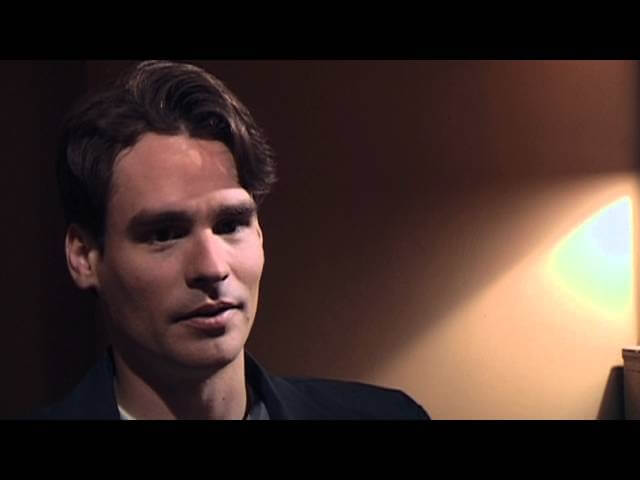Richard Linklater’s other all-talk experiment with Ethan Hawke

Every day, Watch This offers staff recommendations inspired by a new movie coming out that week. This week: Arriving in select theaters Friday, The End Of The Tour belongs to a fine tradition of movies that feature little more than two actors gabbing at each other. We’ve lined up five days of the same, recommending some fine two-person talkfests.
Tape (2001)
Richard Linklater’s most famous foray into small-scale cinematic conversation is, of course, his Before trilogy. But in between Before Sunrise and Before Sunset, he reunited with Ethan Hawke for one of his smallest, least elaborate films: Tape, a little-seen adaptation of a play by Stephen Belber. For almost an hour of the movie’s 86 real-time minutes, Vince (Hawke) and Jon (Robert Sean Leonard) chat in Vince’s motel room; the two are old high school friends, and Vince is in town to see Jon’s new film at a local festival. In the final half-hour, they’re joined by Amy (Uma Thurman), whom they both dated as teenagers.
Amy is a point of contention between the two men, but not, perhaps, for the reasons one might assume. As Vince swings from forced joviality to a more accusatory tone, the pair makes an easy study in contrasts: the cerebral and proper Leonard jostled by the needling, smug Hawke. The latter is more manic than usual, but confirms his basic level of Hawke-ness when Leonard gets to accuse him of getting into a competition over authenticity. Vince, not appearing particularly successful, apparently can claim more of it than his seemingly more upstanding friend.
Linklater has made plenty of movies that double as narrative experiments, but this one may be his most stylistically audacious (save perhaps his forays into rotoscoped animation). While his other talk-heavy movies tend to use long-ish takes (like the extended car argument in Before Midnight), the analog-named Tape finds him playing around with digital video, a novelty back in 2001, making far fussier shot choices than usual. As Vince and Jon get re-acquainted, the camera cuts from close-ups to security-camera-style angles to all manner of unusual placements of the actors in the frame, like a mobile version of Grover demonstrating “near” and “far” on Sesame Street. Even the sections with less cutting are ostentatious: Rather than fixing his camera, Linklater puts together a couple of extended takes made up of repeated back-and-forth whip-pans between Hawke and Leonard. The cliché about filmmakers adapting plays is that they try to “open them up.” Here, Linklater never leaves the motel room, but his grab-bag of images approximates the restlessness that might be generated on-stage from actors pacing around.
As a simple story, the movie is gripping enough, and as an exercise it’s accomplished if fidgety. But its extratextual footnotes offer plenty of interest, too: The movie isn’t just the fourth of Hawke’s eight films with Linklater, but a reunion between Dead Poets Society stars Hawke and Leonard (even playing characters who knew each other as teenagers!) and one of Hawke’s few on-screen intersections with Thurman, his wife at the time of filming. It may be a novelty, but it packs a lot of novelty into an hour and a half.
Availability: Tape is available on DVD from Netflix or your local video store/library. It can also be rented or purchased from the usual digital outlets.